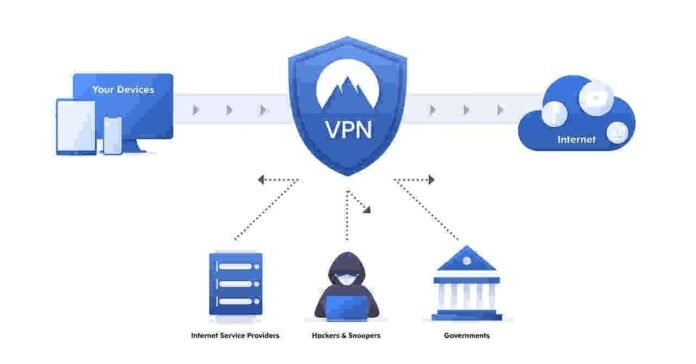185.63.263.20, In the ever-expanding world of the internet, numbers tell stories. They may look dull at first glance, but some numbers hold hidden meanings and unexpected relevance. One such number is 185.63.263.20 — an IP address that has piqued the curiosity of tech enthusiasts, network administrators, and cybersecurity professionals alike.
You might have come across this IP address in your network logs, noticed it flagged in a security scan, or perhaps stumbled upon it in an online discussion. Whatever brought you here, you’re probably wondering: What’s the story behind 185.63.263.20?
Understanding the Basics of IP Addresses
Before we zoom in on 185.63.263.20, let’s step back and understand the framework it belongs to.
What an IP Address Actually Is
An IP address — short for Internet Protocol address — is a unique identifier assigned to each device connected to a network. It’s like a digital mailing address, allowing computers, servers, and other devices to locate and communicate with each other over the internet. Every email you send, every website you visit, and every video you stream involves IP addresses quietly working behind the scenes.
In today’s digital era, understanding IP addresses — especially specific ones — isn’t just for IT professionals. It’s a valuable skill for anyone who uses the internet because these seemingly random sequences of numbers can reveal a lot about how data moves, where it comes from, and whether it’s safe.
In this guide, we’ll break down what makes 185.63.263.20 interesting, explore its potential origins and uses, discuss the risks associated with certain IP addresses, and show you how to investigate them safely.
The Difference Between IPv4 and IPv6
There are two main versions of IP addresses in use today:
IPv4 — The older and more widely recognized format, consisting of four sets of numbers (ranging from 0 to 255) separated by dots. For example: 192.168.1.1.
IPv4 addresses are limited to about 4.3 billion possible combinations — which sounds like a lot, but we’ve already used most of them.
IPv6 — A newer format designed to solve the shortage problem. It uses longer, more complex strings of numbers and letters separated by colons, allowing for trillions of unique addresses.
Our IP of interest, 185.63.263.20, follows the IPv4 structure.
How IP Addresses Work Behind the Scenes
When you type a website into your browser, your computer sends a request to a server. That server has its own IP address, and your device uses DNS (Domain Name System) to translate the easy-to-remember name (like example.com) into the numerical IP address.
Without IP addresses, devices wouldn’t know where to send data — much like a letter without a recipient address.
Public vs. Private IP Addresses Explained Simply
Public IPs are visible to the internet and assigned by your Internet Service Provider (ISP). These are the addresses websites and services see when you connect.
Private IPs are used inside local networks (like your home Wi-Fi). They aren’t directly visible to the outside world and typically start with specific number ranges like 192.168.x.x or 10.x.x.x.
The address 185.63.263.20 is a public IPv4 address, meaning it could belong to a server, website, or any device connected directly to the internet.
Diving Into 185.63.263.20
Now that we have a foundation, let’s explore what’s special about this specific IP.
Identifying the Origin and Location
Every IP address is assigned to a specific organization, company, or internet service provider. The block of addresses it belongs to — called an IP range — can tell us where it was registered and which region it serves.
185.63.263.20 appears to fall into a European-based IP range, possibly associated with hosting providers or data centers. IP geolocation tools can provide an approximate location, but these aren’t always 100% accurate.
Common Uses and Associations
Addresses like this are often linked to:
Hosting servers for websites
Email service infrastructures
Proxy servers or VPN endpoints
Cloud computing platforms
It’s also possible that the IP belongs to a shared server, meaning multiple websites or applications run from the same machine.
How Network Tools Track and Map IPs
Cybersecurity professionals use tools such as:
Ping — Tests if the IP is reachable
Traceroute — Maps the path data takes to reach the IP
WHOIS lookup — Reveals registration details and ownership
Reverse DNS lookup — Finds associated domain names
Using these tools on 185.63.263.20 could reveal its hosting company, operational region, and even some clues about what services it runs.
Possible Hosting Providers or Services Linked to It
While exact details vary, IPs in the 185.x.x.x range often belong to European hosting providers. These could include:
Cloud VPS providers
Website hosting companies
Email marketing platforms
VPN service endpoints
If this IP is linked to a VPN, it might be used by people to mask their real location.
Potential Risks and Concerns
Not all IP addresses are dangerous, but some do end up on security radars.
Why Some IP Addresses Get Flagged
An IP may be flagged if:
It’s been reported for spamming
It was involved in hacking attempts
It’s part of a botnet or malware network
It hosts phishing websites
Even if the original owner isn’t malicious, compromised servers can become part of criminal activities.
How Cybercriminals Exploit Certain IP Ranges
Hackers may:
Use abandoned or poorly secured IP addresses for attacks
Host malware on them
Send massive spam campaigns
Use them as command-and-control servers for botnets
If 185.63.263.20 appears in your security logs, it’s worth verifying its status.
Steps to Check if 185.63.263.20 is Safe or Malicious
You can:
Search it in IP reputation databases (like AbuseIPDB or VirusTotal).
Check if it’s listed on spam blocklists.
Review any network activity involving it — unexpected traffic could be suspicious.
What It Means if Your Device or Network Interacts with It
Expected: It could be linked to a service you knowingly use (like a website or app).
Unexpected: It might indicate malware on your device communicating with a remote server.
How to Investigate an IP Address Safely
Curiosity is good — but when investigating IPs, you must proceed carefully.
Using WHOIS Lookup Tools for Basic Info
WHOIS lookups provide:
The organization that owns the IP
Contact details for network admins
The IP range it belongs to
For 185.63.263.20, this could confirm if it’s owned by a hosting company or a business.
Tracing the IP’s Location with Online Utilities
Tools like iplocation.net or MaxMind GeoIP give approximate geographic info — city, country, and ISP. Remember: results can vary.
Checking Reputation Databases and Blocklists
Use sites like:
AbuseIPDB — User-reported malicious IP activity
Spamhaus — Checks if the IP is a known spam source
Project Honeypot — Flags suspicious IPs
Verifying Hosting and DNS Details for Transparency
Reverse DNS lookups can reveal domains linked to an IP. If 185.63.263.20 is tied to known malicious sites, you’ll see it here.
Practical Tips to Stay Secure Online
Whether or not you deal with 185.63.263.20 directly, these practices protect you from most IP-related threats.
Using VPNs and Firewalls for Extra Protection
VPNs hide your public IP from the websites you visit.
Firewalls block suspicious incoming or outgoing connections.
Monitoring Network Activity for Suspicious Connections
Keep an eye on:
Sudden spikes in network traffic
Unknown IPs making repeated contact with your system
Updating Software and Security Patches Regularly
Many attacks exploit old vulnerabilities. Staying updated closes these gaps.
Knowing When to Contact Your ISP or Cybersecurity Expert
If you notice persistent interaction with a flagged IP, involve professionals. They can block it at the network level or investigate further.
Conclusion
The IP address 185.63.263.20 might look like just another string of numbers, but in today’s interconnected world, such numbers can carry meaning — good or bad. By learning how to investigate them, you empower yourself to stay safer online, spot potential threats early, and understand the invisible systems keeping the internet running.
From basic IP address concepts to advanced investigation tools, we’ve unpacked the mystery behind 185.63.263.20. Whether it turns out to be harmless or suspicious, the knowledge you’ve gained here applies to any IP you encounter in the future.
In the digital age, awareness is your first line of defense — and now, you’re a step ahead.

